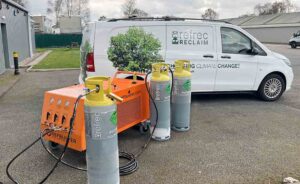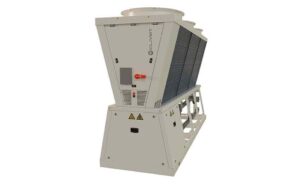US proposes new rooftop efficiencies
19th September 2014 USA: The US Department of Energy has proposed new efficiency standards for commercial rooftop air conditioners that could slash energy use by as much as 30%.
USA: The US Department of Energy has proposed new efficiency standards for commercial rooftop air conditioners that could slash energy use by as much as 30%.
The proposed standards would set minimum IEER (integrated energy efficiency ratio) levels of 12.3 to 14.8 depending on equipment type and capacity.
With nearly half of all commercial premises in the US using rooftop units, it is predicted that the proposed rooftop air conditioning standards could achieve the largest national energy savings of any standard ever issued by the US Department of Energy.
“DOE’s new standards are a breath of cool air for businesses since air conditioners account for about 10 percent of a typical commercial building’s electricity cost,” said Steve Nadel, executive director of the American Council for an Energy-Efficient Economy. “The new standards will drive innovative, energy-efficient air conditioners into buildings across America, not only saving businesses money, but also reducing electricity demand and environmental emissions.”
DOE estimates that over the lifetime of units sold over thirty years, the proposed standards would save businesses between $16 and $50bn and reduce electricity consumption by about 1.3 trillion kWh.
The current efficiency standards for rooftop air conditioners measure efficiency at full capacity despite the fact that air conditioners rarely operate at that level except on the hottest days. The new proposed IEER standards captures efficiency at 25, 50, 75, and 100% of full capacity and better reflects real-world performance.
Typical new rooftop air conditioners that just meet the commercial building energy code have efficiency levels of about 9.5 to 11.5. However, many of the major manufacturers now produce equipment that achieves IEER levels as high as 21.
In an effort to spur the market introduction of higher efficiency commercial rooftop air conditioners, the DOE created the RTU Challenge, enlisting manufacturers to develop a 10-ton unit that meets the18.0 IEER-specifications by April 1 2013.
The challenge was embraced by companies like Carrier with its WeatherExpert models ranging from 3- to 23-ton units reaching a high-IEER rating of 21.0








